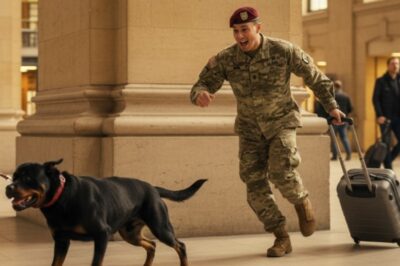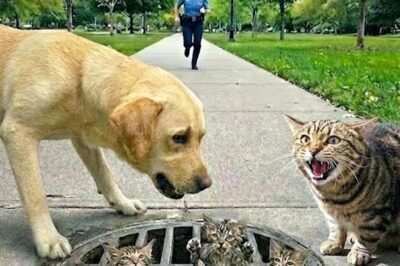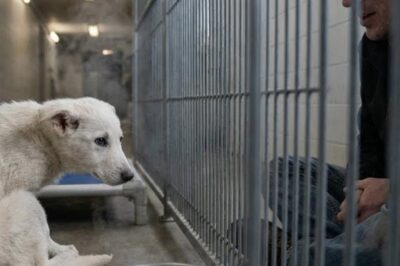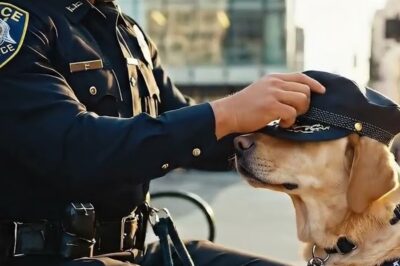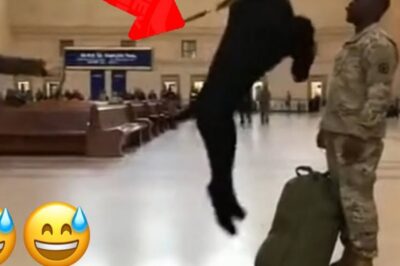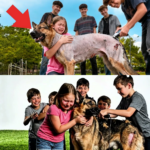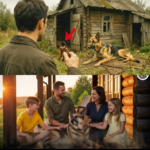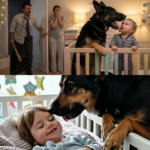How to Stop Leash Pulling in One Session: Real-World Dog Training for Every Owner
Leash pulling is the number one reason owners dread dog walks—and a top complaint for trainers everywhere. Whether your dog is a small breed or a giant like Luna, a nine-month-old Cane Corso mix, a “freight train” on the end of the leash takes the joy out of walks and leaves you feeling powerless. In this article, you’ll discover a proven, no-nonsense two-step method to stop leash pulling—often in just 10 to 15 minutes—so you and your dog can finally enjoy calm, stress-free walks.
Meet Luna: A Relatable Leash-Pulling Challenge
Luna isn’t aggressive or reactive—she’s just strong, playful, and totally uninterested in sticking by her owner’s side. Her owner, an older woman, confessed, “I cannot walk this dog.” Sound familiar? This scenario spans all ages and breeds: young, energetic dogs who pull toward every scent, sight, or distraction.
The good news? With a simple, structured approach, ANY dog (even a stubborn Cane Corso mix) can learn to walk politely on leash.

Why Most Solutions Fail
Many owners resort to treats, constant talking, or gentle begging—none of which work reliably when the stakes are high (think squirrels or other dogs). Others try harsh corrections on flat collars, risking injury with heavy-handed leash pops. The secret lies in timing, technique, and the right use of simple training tools.
The Two-Step Solution to Leash Pulling
Step 1: The Corrective U-Turn
This is the foundation of the process. Here’s how it works:
When your dog is pulling ahead and not looking at you:
Quietly change direction—a 180-degree turn.
Do NOT talk, call, or make noise. Just turn and go.
Your dog will feel leash pressure and learn, “when I pull, I lose my forward progress.”
The leash snap is only as hard as it needs to be—never yank, just enough to communicate the change of direction.
Repeat back-to-back as needed. Dogs learn quickly that if they don’t pay attention, they get left behind.
The science: The method isn’t about punishment—it’s a reset. Your dog learns that you are the leader, and paying attention is the only way to enjoy the walk.
Step 2: The Stop-and-Pop
Once your dog is closer and more attentive (thanks to the corrective U-Turns), refine their positioning:
When your dog starts to creep a foot or two ahead:
Stop abruptly and quietly.
If your dog doesn’t stop with you, give a quick, firm “pop” on the leash.
As soon as your dog returns to your side or gives eye contact, immediately pay with calm praise or a treat.
Pro tip: Avoid using this correction when your dog is already looking at you—that’s exactly what you want! Never punish engagement.
Tools Matter: Why the Prong Collar Is Used Here
For strong, determined dogs, a prong (or pinch) collar can be safer and more effective than flat collars or choke chains, IF it’s used responsibly. The prong collar “mimics a mother dog’s natural correction” and allows for far less force: gentle guidance, rather than hard yanking or risk to the neck. Luna was conditioned to hers and unfazed when it was applied, ensuring the training was humane and effective.
Why No Treats (at First)?
Many trainers (and owners) rely on treats to get the dog’s attention. The problem? If your dog finds the environment (smells, sights, distractions) more interesting than food, you’re out of luck. This method starts by creating attention-through-consequences first: “If I ignore the person on the other end of the leash, I lose out.” Only when your dog is choosing to pay attention do you reinforce with treats or praise.
It’s discipline first, reward second—just like parenting a child in public.
Real World Results – All Breeds, All Ages
During Luna’s lesson, just three corrective U-Turns and a couple of stop-and-pops were enough to transform her walk—in under 15 minutes. Was it perfect? Not quite (no training is!), but the owner reported instant, dramatic change:
“Before, she’d be off in the weeds or completely ignoring me—even with pressure on the prong collar. Now, she’s attentive and relaxed.”
How to Use This Method on Your Dog
Get the right tool
- : For strong pullers, use a conditioned prong collar for humane corrections. For smaller or more sensitive dogs, a well-fitted slip lead may suffice.
Start with the corrective U-Turn
- : Every time your dog pulls and ignores you, turn sharply (and quietly) and walk the other way.
Transition to stop-and-pop
- : Once your dog’s walking closer, stop with no warning when they edge ahead. If they don’t stop, give a quick pop to remind them.
Reward engagement
- : Whenever your dog checks in or walks in the “sweet spot” (right by your side), offer praise or a treat.
Be 100% consistent
- : Don’t let your dog get away with pulling ever again—every walk, every time. Gray areas (“sometimes I pull, sometimes I don’t”) only create confusion.
Setting Your Dog Free—But on YOUR Terms
A leash-trained dog earns freedom. After a focused heel in busy areas, reward your dog by letting them sniff, explore, and be a “free dog” someplace safe—after you give a release cue like “free” or “okay.” This balance keeps walks fun and maintains your leadership.
Frequently Asked Questions
Does this work for older dogs? Absolutely. Age and breed are irrelevant. Engagement is engagement!
Do I need to use a prong collar? For most strong, high-drive dogs, it’s the safest tool when used correctly. For lighter dogs or milder pullers, a slip lead is often enough.
My dog is reactive or aggressive—will this work? This method sets the foundation, but if your dog has serious reactivity or aggression, contact a professional before proceeding.
Final Thoughts: Fast, Reliable, and Humane
Despite what you may have heard, leash-pulling does not require months or a lifetime to fix. When approached with clarity, consistency, and the right technique, most dogs are transformed in a single session. Future walks don’t just become possible—they can actually be enjoyable!
So, grab your leash, practice your U-Turns and stop-and-pops, and reclaim those long-lost walks. Don’t forget: when you get your “perfect walk,” share your success story—just like Luna and her grateful owner.
Happy training!
Full video :
News
💥 Personne ne s’y attendait! Die Wahrheit éclate VOR 5 MINUTEN im MOMA! Springer demontiert Hayali live – die Abreibung wird zur „Malédiction“ für den öffentlich-rechtlichen Rundfunk. C’est difficile zu glauben, aber c’est vrai: Die knallharte Attacke agaciert zutiefst und enthüllt die schockierenden, bisher verschwiegenen Hintergründe der politischen Berichterstattung. Die emotionale Krise zeigt die wahren Fronten im Medienkrieg. Welches explosive, nur angedeutete Detail zwang den Springer-Vertreter zu dieser sofortigen, öffentlichen und schonungslosen Zurechtweisung? Alle Details zum Eklat sind in den Kommentaren! Lesen Sie sofort weiter! 👇
💥 Personne ne s’y attendait! Die Wahrheit éclate VOR 5 MINUTEN im MOMA! Springer demontiert Hayali live – die Abreibung…
Monatelang herrschte Stille im Haus, doch die Hunde gaben die Hoffnung nie auf. Als ihr Soldat nach langer Abwesenheit plötzlich wieder vor ihnen steht, explodieren die Emotionen: Jaulen, Zittern, Springen – pure Freude ohne Zurückhaltung. Dieser Moment zeigt eine Liebe, die Zeit, Entfernung und Angst überlebt hat. Was dann geschieht, lässt selbst Außenstehende innehalten und beweist, dass Loyalität manchmal stärker ist als Worte… klickt auf den Link, um das ganze Video zu sehen.
Monatelang herrschte Stille im Haus, doch die Hunde gaben die Hoffnung nie auf. Als ihr Soldat nach langer Abwesenheit plötzlich…
Ein Hund läuft unruhig zwischen Passanten hin und her, bellt, bleibt stehen, zieht an Hosenbeinen – als wolle er unbedingt etwas sagen. Niemand ahnt, dass unter ihren Füßen ein winziges Kätzchen in einem überfluteten Gully um sein Leben kämpft. Erst als Menschen dem Hund folgen, begreifen sie die Wahrheit. Was dann passiert, verwandelt eine regnerische Straße in eine Szene voller Mut, Mitgefühl und Hoffnung… klickt auf den Link, um das ganze Video zu sehen.
Ein Hund läuft unruhig zwischen Passanten hin und her, bellt, bleibt stehen, zieht an Hosenbeinen – als wolle er unbedingt…
Der Welpe war zu schwach zum Fressen, sein Blick leer, sein Körper ausgezehrt – jede Hilfe schien vergeblich. Tierärzte hatten kaum noch Hoffnung, Pfleger versuchten alles. Doch dann tat seine Retterin etwas völlig Unerwartetes: Sie begann leise ein Lied zu singen. Was in den nächsten Minuten geschah, widersprach jeder Logik und berührte selbst abgebrühte Tierschützer bis ins Mark. Dieser Moment veränderte alles… klickt auf den Link, um das ganze Video zu sehen.
Der Welpe war zu schwach zum Fressen, sein Blick leer, sein Körper ausgezehrt – jede Hilfe schien vergeblich. Tierärzte hatten…
Als die Brücke einstürzt und der Polizei-Labrador Scout spurlos verschwindet, rechnet niemand mehr mit einem Wunder. Tage vergehen, die Hoffnung schwindet, doch sein Hundeführer gibt nicht auf. Was dann geschieht, erschüttert selbst erfahrene Einsatzkräfte: Scouts Rückkehr ist nicht nur unerwartet, sondern enthüllt, was der Hund während seines Verschwindens durchlebt hat. Ein Moment, der selbst harte Polizisten in Tränen ausbrechen lässt… klickt auf den Link, um das ganze Video zu sehen.
Als die Brücke einstürzt und der Polizei-Labrador Scout spurlos verschwindet, rechnet niemand mehr mit einem Wunder. Tage vergehen, die Hoffnung…
Nach Jahren des Wartens glaubt niemand mehr an ein Wiedersehen – doch plötzlich steht er da: der Soldat, den sein Hund nie vergessen hat. Die Reaktion des Tieres ist überwältigend, voller Zittern, Winseln und purer Freude, als hätte die Zeit nie existiert. Was dieser Moment offenbart, geht weit über ein einfaches Wiedersehen hinaus und zeigt eine Loyalität, die selbst abgebrühte Militärveteranen zu Tränen rührt… klickt auf den Link, um das ganze Video zu sehen.
Nach Jahren des Wartens glaubt niemand mehr an ein Wiedersehen – doch plötzlich steht er da: der Soldat, den sein…
End of content
No more pages to load


